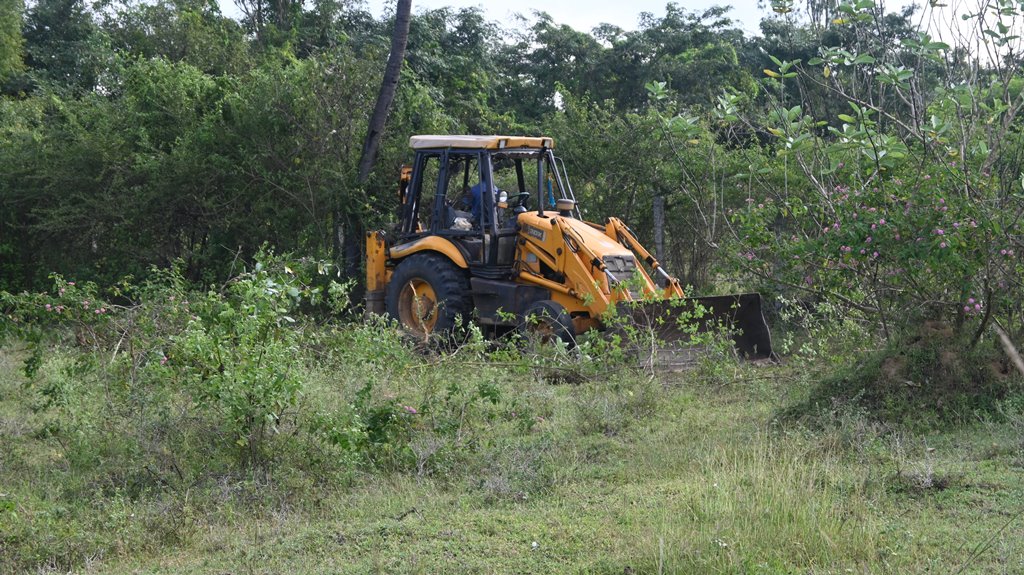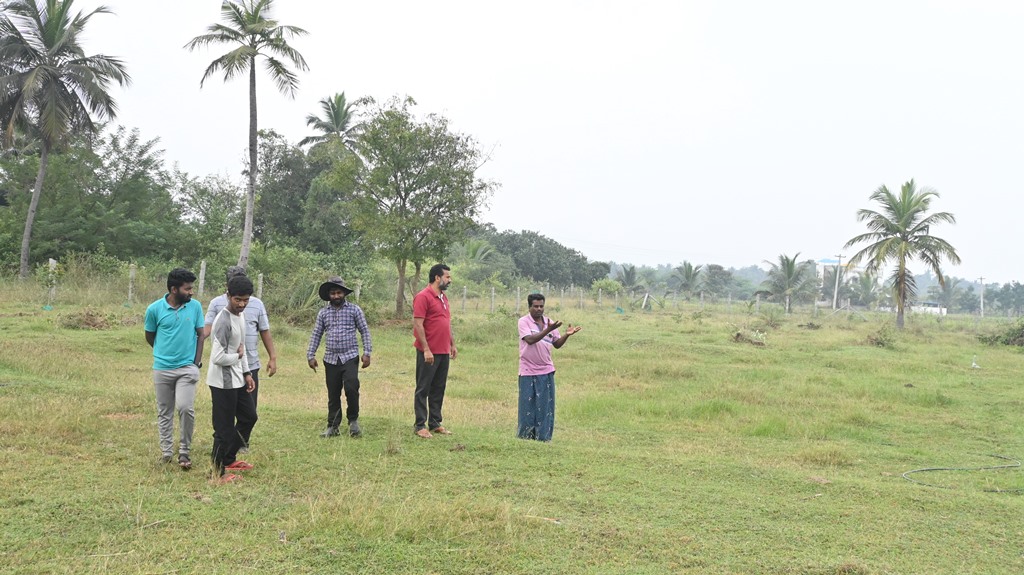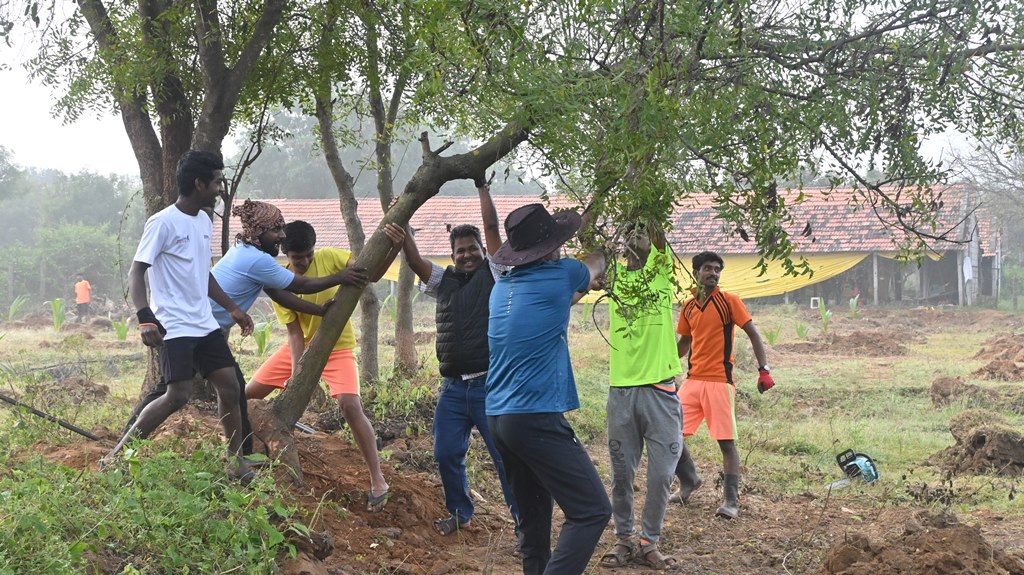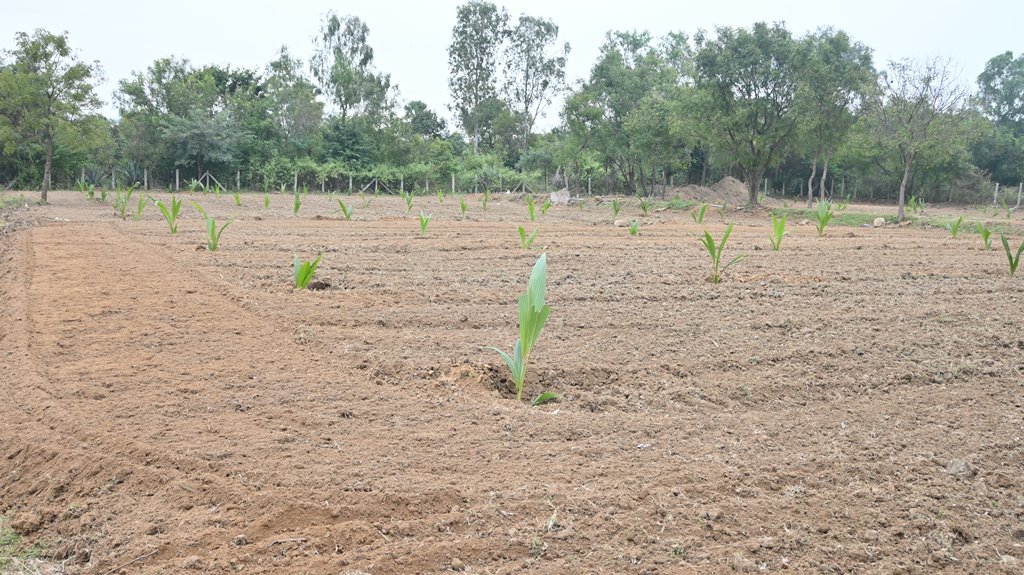At Snehagram, we identified a piece of land that had been left unused and decided to transform it into a coconut plantation. The coconut tree, scientifically known as Cocos nucifera, is of great importance to the agricultural economy of India. Our goal is to make the most of this valuable resource and contribute to the growth and development of the region.
The benefits of coconut are numerous, from the copra and coconut oil used in the production of soaps, hair oil, cosmetics and other industrial products, to the husk which is a source of fiber for a large coir industry. It takes up to seven years for a coconut palm to produce fruit. The coconut can be used for food in the forms of fiber, fruit (or meat), milk, oil, and water. Because of its versatility, coconut palms are also known as the Tree of Life.
With the help of labor, we began to clear the land using a JCB and removing all weeds, thorns, and large bushes. It was a challenging task to remove hard stones and big thorny trees that had overrun the land. After the clearance, we dug pits and planted 135 coconut saplings. We then ploughed the land and installed a drip irrigation system for easy watering. We were fortunate that as soon as we finished planting, it rained continuously for three days, which was beneficial for the new plants. The students are constantly working hard and tending to the plantation, and we are eagerly awaiting the first harvest.




